|
|
|
|
|
|
|
Achi-Kochi Japan
Showing many places to visit and foods to eat in Japan
|
|
|
|
|
|
|
|
|
|
|
|
|
Japan
> Koh-Shin-Etsu region
> Kofu City and Koshu City
|
|
|
|
|
|
|
Kofu City and Koshu City
Yamanashi Pref., Koh-Shin-Etsu ( Achi-Kochi Japan )
|
|
|
|
|
|
|
|
|
|
|
|
|
( "Achi-Kochi" in Japanese means "Here and there" in English. )
Kofu City, Yamanashi Pref., Koh-Shin-Etsu region

Kofu, the capital city of Yamanashi Prefecture, is located in the south of Koh-Shin-Etsu Region ( above ). Its population is almost 190 thousands. The city has been the political center of Kai Province ( now Yamanashi Prefefcture ) since the beginning of the 16th century.
|
|
Site of Tsutsujigasaki Yakata

Tsutsujigasaki Yakata ( above ) was built in A.D.1519 as a residence of Nobutora Takeda, who was a warring lord ruling Kai Province. He made his vassals live near by. Surrounding the residence, a town developed and it was named "Kofu".
|
|
Castle
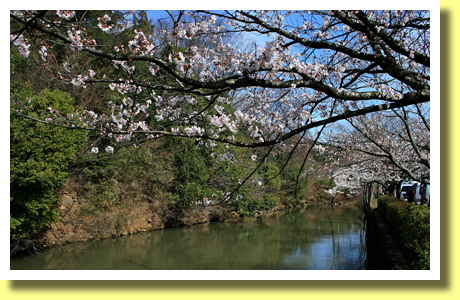
Tsutsujigasaki Yakata was a residence of the Takeda family and is not referrd as a castle. However the residence was fortified with moats ( above ), two storey gates, earthworks and stoneworks. So it was a castle substantially.
|
|
Takeda Jinja ( Shrine )

Takeda Jinja ( Shrine - above ) is located in the center of Tsutsujigasaki Yakata. The shrine was founded to enshrine Shingen Takeda. It is said that Shingen Takeda was the strongest among Sengoku Daimyo ( Warring Lords ) in the Sengoku Jidai ( Age of Warring States ==> A History of Japan vol.2 Samurai Age ).
Shingen Takeda threw his father, Nobutora Takeda in A.D.1540 out of Kai Province, of which Shingen became the ruler. He fought a lot of battles and expanded his domain. Shingen Takeda is one of the most popular Sengoku Daimyo among Japanese people, especially people in Yamanashi Prefecture.
|
|
Erin-ji Temple and Sakura
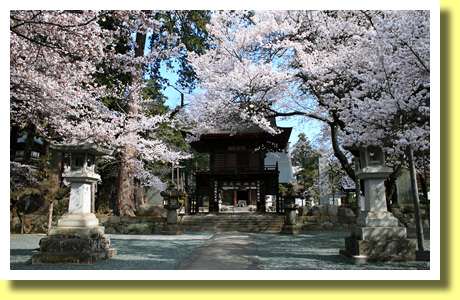
There is Erin-ji Temple in Koshu City, which is located to the north east of Kofu City. In front of its San-mon gate, there are some cherry trees and in the season of Hanami ( Sakura Viewing ), visitors would enjoy a view of San-mon Gate and Sakura ( above ).
Another gate, Shikyaku-mon of the temple was built in A.D.1606, which is the oldest among the remaining structures of the temple and is one of the designated Important Cultural Properties of Japan.
|
|
Myoo-den of Erin-ji Temple
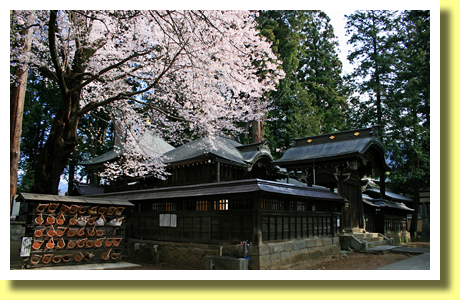
Erin-ji Temple was founded in A.D.1330 by Muso Soseki, a Zen Buddhist priest. However the temple became ruinous at the end of the 15th century. Then Shingen Takeda made the temple revived in A.D.1541. After Shingen Takeda died in A.D.1573, he was buried in the inmost of the Myoo-den building ( above ) in the site of Erin-ji Temple.
|
|
Garden of Erin-ji Temple
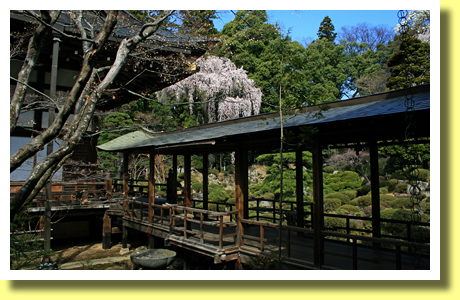
Though Muso Soseki was a Zen Buddhist priest, he was a famous garden designer as well. Some gardens designed by him remain Achi-Kochi ( here and there ) in Japan including the Japanese garden of Erin-ji Temple ( above ), which is one of the designated National Places of Scenic Beauty of Japan.
|
|
Shidare-zakura of Jiun-ji Temple
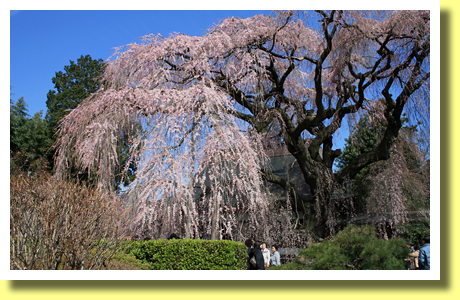
Not only Erin-ji but also Jiun-ji Temple were founded in Koshu City by Muso Soseki. Jiun-ji Temple is famous for Shidare-zakura ( a weeping cherry tree - above ) and is so popular in the season of Hanami ( Sakura Viewing ). It is said that the weeping cherry tree, called "Itozakura", is more than 300 years old.
|
|
Shidare-zakura of Shurin-ji Temple
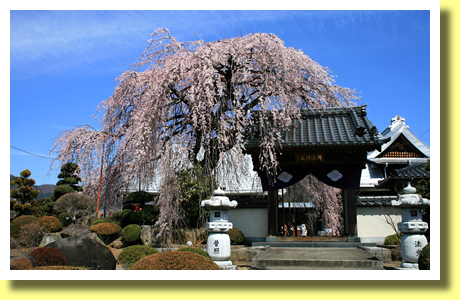
Shurin-ji Temple, located within 10 minutes walk from Jiun-ji, is also famous for Shidare-zakura ( above ). So in the season of Hanami, so many people walk from Jiun-ji to Shurin-ji Temple.
|
|
Site of Kofu-jo Castle
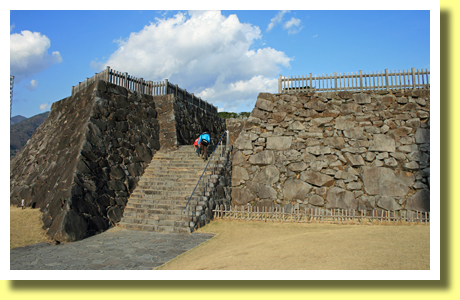
Back in Kofu City, there is the site of Kofu-jo Castle ( or Maizuru-jo - above ). Katsuyori Takeda, the successor and the son of Shingen Takeda, was defeated in A.D.1582 by Nobunaga Oda and the Takeda family was destroyed. So Tsutsujisaki Yakata was abandoned and Kofu-jo Castle was built instead by Ieyasu Tokugawa.
|
|
View of Kofu City and Mount Fuji
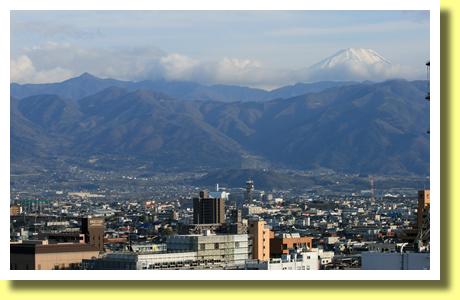
Ieyasu Tokugawa, once defeated by Shingen Takeda in A.D.1573, finally established Tokugawa Shogunate in Edo ( Tokyo now ) in A.D.1603. Almost through Tokugawa Period, Kai Province and Kofu City had been ruled by the Shogunate as well as Kofu-jo Castle, which offers a fine vew of Kofu City and Mount Fuji ( above ).
|
|
Hoto

Hoto ( above ) is a noodle soup, which is unique to and popular in Yamanashi Prefecture. In Kofu City, there are many restaurants which serve various kinds of Hoto.
The ingredients of Hoto are noodles made of flour and various vegetables, which are to be boiled in Miso ( soybean paste ) soup. Some say in Yamanashi that the most important among vegetables in Hoto is pumpkin, which, boiled in miso soup, makes the best taste.
|
Copyright (c) 2021 Achi-Kochi Zanmai Co., Ltd.
|